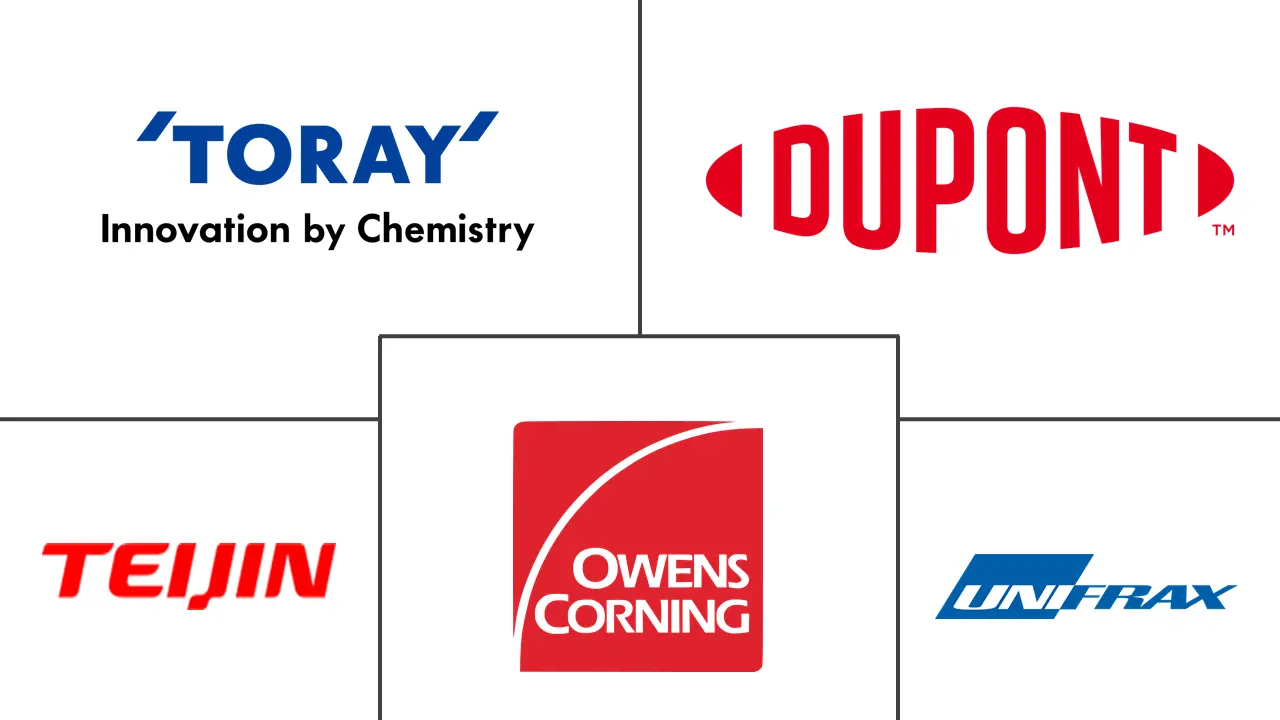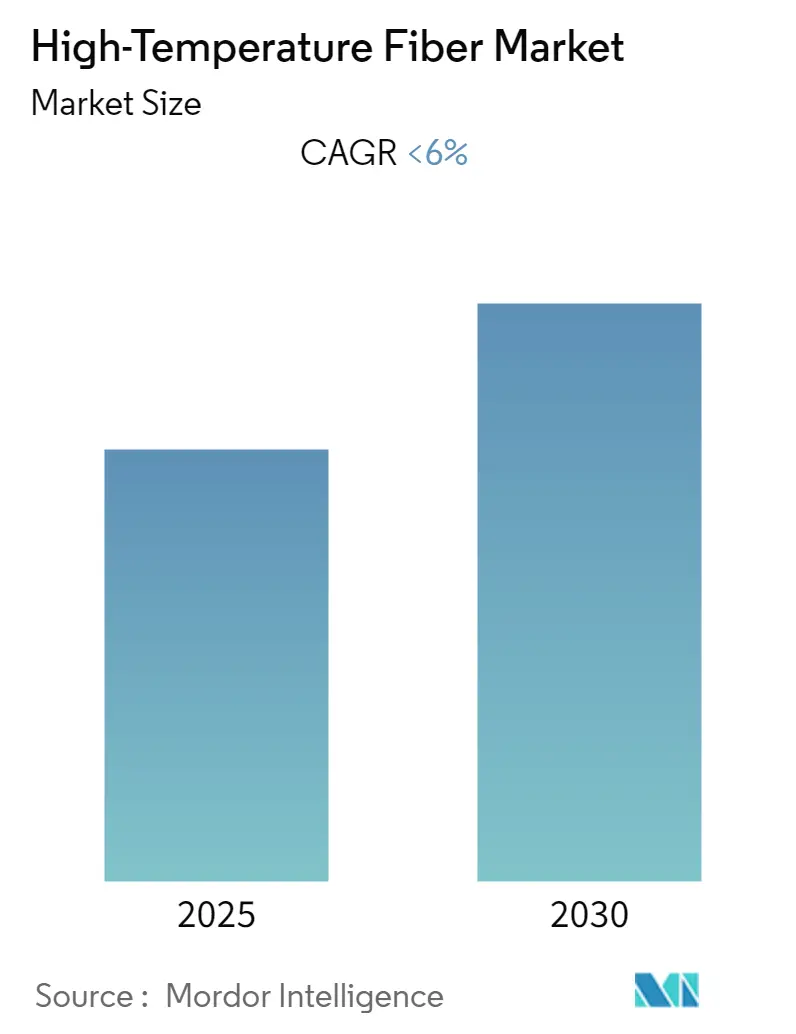
High-Temperature Fiber Market Analysis
The High-Temperature Fiber Market is expected to register a CAGR of less than 6% during the forecast period.
Increasing applications for ceramic fibers and growing demand for heat and fire-resistant fibers from the automobile sector are driving the market growth.
The high cost of production and the impact of COVID-19 in every region are expected to hinder the market growth.
High-Temperature Fiber Market Trends
Growing Demand for High-Temperature Resistance Applications
- High-Temperature Fiber has been increasingly used as high thermal insulation material in various end-user industries such as automobiles, aerospace, industrial, electronics, and security purposes.
- Generally, high-temperature fibers are made up of different fibers such as aramid, ceramic, basalt, and other types. These fibers can handle a temperature of approximately 220 °c and also have great mechanical and physical properties.
- The properties of high-temperature fibers include good thermal and electrical insulation, high-strength bearing capacity, chemical resistance, excellent toughness and processability.
- The demand for aramid and ceramic high-temperature fibers has been growing significantly from the industrial sector as these offer good flexibility and provide much better security in different applications.
- High-Temperature Fibers are also being used in electronics due to their properties such as electrical resistance and electric insulation.
- The automobile sector is the fastest-growing segment in the consumption of high-temperature fibers. Manufacturers have been attracted to these fibers and these materials are increasingly being used for various applications where more heat is being generated.
- The outbreak of COVID-19 globally is expected to affect the production and the demand of high-temperature fibers in 2020.
- However, rapid recovery in industrialization in Asia-Pacific, growing electronics industry, and innovative applications in aerospace are expected to drive the demand for high-temperature fibers in coming years.
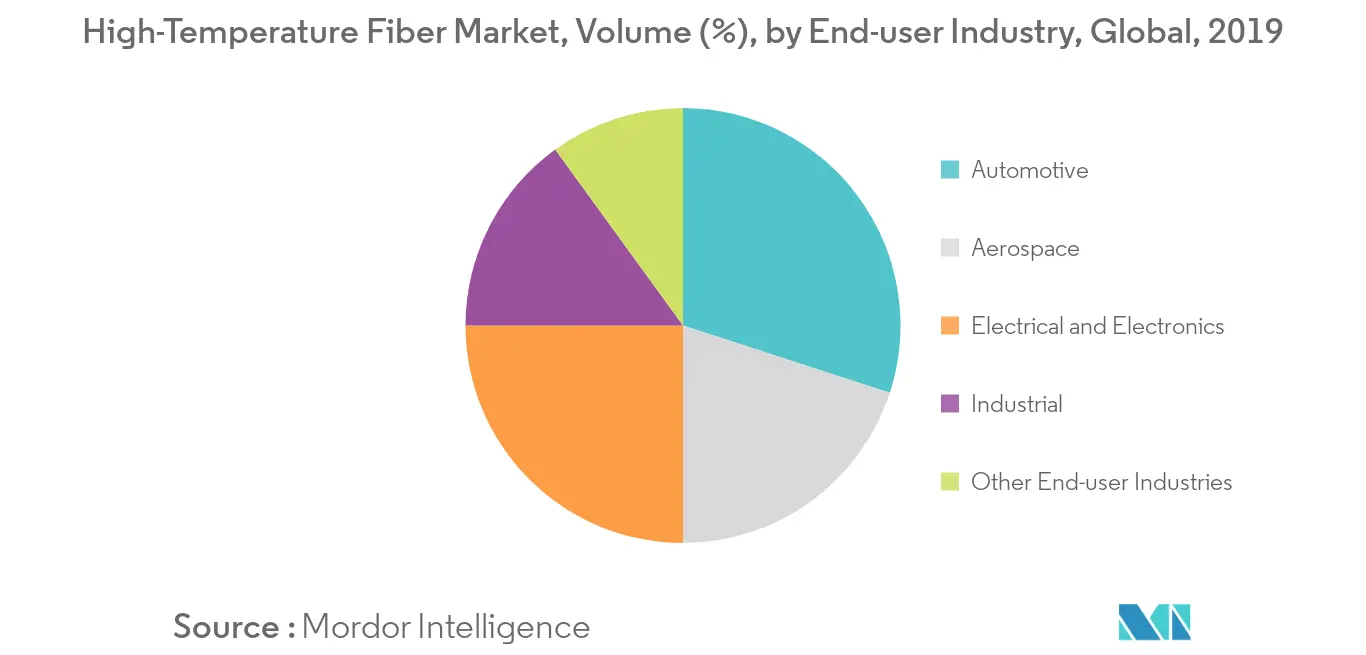
Asia-Pacific Region to Dominate the Market
- Asia-Pacific is expected to dominate the global market owing to the highly developed electronics and automobile sector, coupled with the continuous investments done in the region to advance the industrial sector through the years.
- The demand for electronics has been significantly increasing because of the technological advances in the region. China, Japan, and Taiwan host a large number of electronic manufacturing plants in the region. This is one of the reasons behind the huge demand and increasing production of high-temperature fibers in recent years.
- The growth is also driven by the aerospace sector. Increasing consumption of high-temperature fibers in exterior and interior parts mainly in the commercial and military aircraft.
- Honeywell estimates that nearly 7,700 new aircraft deliveries are projected to be witnessed by 2028 and the Chinese aerospace industry is one of the leading industries in the region. The Chinese government is heavily investing to increase its domestic manufacturing capabilities. This in turn is expected to drive demand for high-temperature fibers from the aerospace sector during the forecast period.
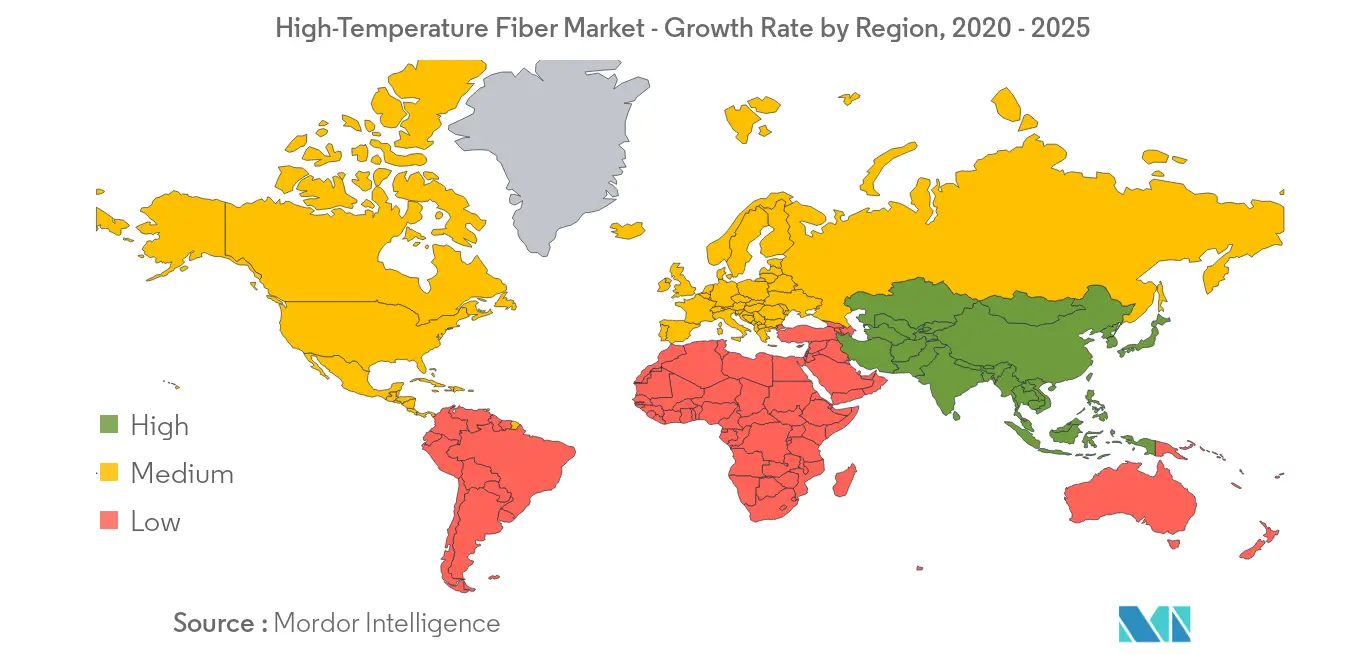
High-Temperature Fiber Industry Overview
The global high-temperature fiber market is fragmented in nature with many players competing in the market. Some of the major companies are Toray Industries Inc, Owens Corning, DuPont, Teijin Limited, and Unifrax Corporation, among others.
High-Temperature Fiber Market Leaders
-
Toray Industries Inc
-
Owens Corning
-
DuPont
-
Teijin Limited
-
Unifrax Corporation
- *Disclaimer: Major Players sorted in no particular order
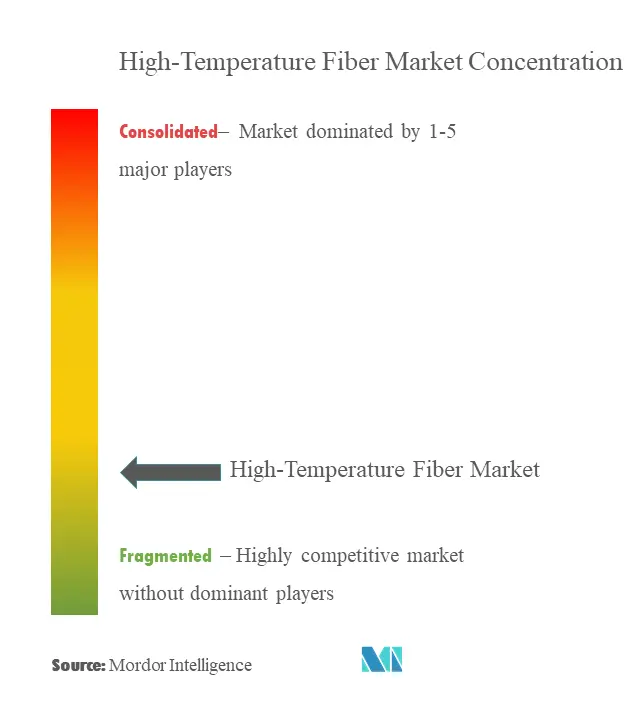
High-Temperature Fiber Industry Segmentation
The High-Temperature Fiber Market report include:
| Fiber Type | Aramid | ||
| Ceramic | |||
| Basalt | |||
| Other Fibers | |||
| End-user Industry | Automotive | ||
| Aerospace | |||
| Electrical and Electronics | |||
| Industrial | |||
| Other End-user Industries | |||
| Geography | Asia-Pacific | China | |
| India | |||
| Japan | |||
| South Korea | |||
| Rest of Asia-Pacific | |||
| North America | United States | ||
| Canada | |||
| Mexico | |||
| Europe | Germany | ||
| United Kingdom | |||
| France | |||
| Italy | |||
| Nordic Countries | |||
| Rest of Europe | |||
| South America | Brazil | ||
| Argentina | |||
| Rest of South America | |||
| Middle-East and Africa | Saudi Arabia | ||
| South Africa | |||
| Rest of Middle-East and Africa | |||
High-Temperature Fiber Market Research FAQs
What is the current High-Temperature Fiber Market size?
The High-Temperature Fiber Market is projected to register a CAGR of less than 6% during the forecast period (2025-2030)
Who are the key players in High-Temperature Fiber Market?
Toray Industries Inc, Owens Corning, DuPont, Teijin Limited and Unifrax Corporation are the major companies operating in the High-Temperature Fiber Market.
Which is the fastest growing region in High-Temperature Fiber Market?
Asia Pacific is estimated to grow at the highest CAGR over the forecast period (2025-2030).
Which region has the biggest share in High-Temperature Fiber Market?
In 2025, the Asia Pacific accounts for the largest market share in High-Temperature Fiber Market.
What years does this High-Temperature Fiber Market cover?
The report covers the High-Temperature Fiber Market historical market size for years: 2019, 2020, 2021, 2022, 2023 and 2024. The report also forecasts the High-Temperature Fiber Market size for years: 2025, 2026, 2027, 2028, 2029 and 2030.
Our Best Selling Reports
High-Temperature Fiber Industry Report
Statistics for the 2025 High-Temperature Fiber market share, size and revenue growth rate, created by Mordor Intelligence™ Industry Reports. High-Temperature Fiber analysis includes a market forecast outlook for 2025 to 2030 and historical overview. Get a sample of this industry analysis as a free report PDF download.

